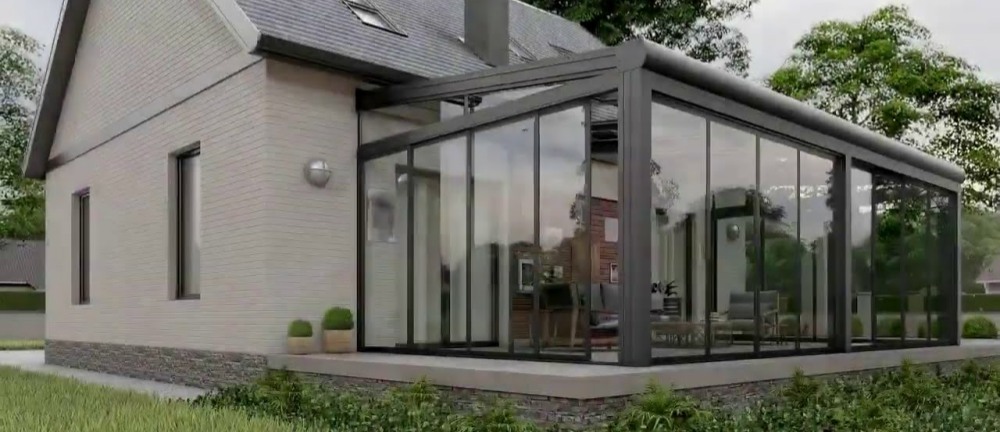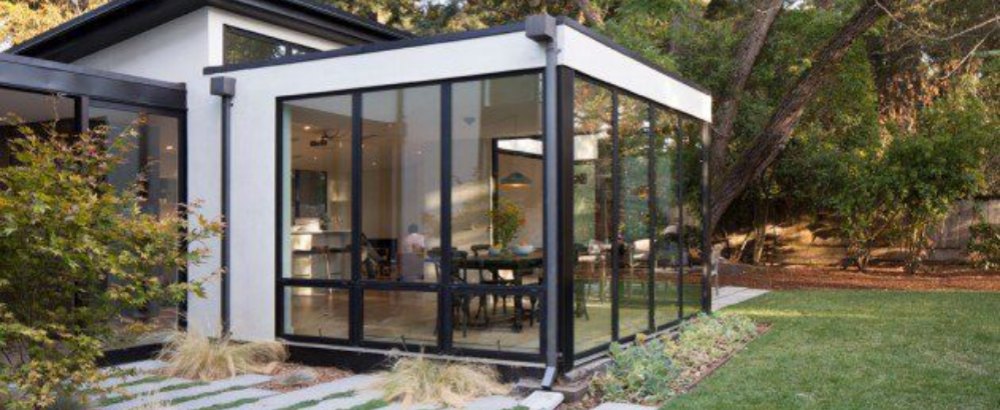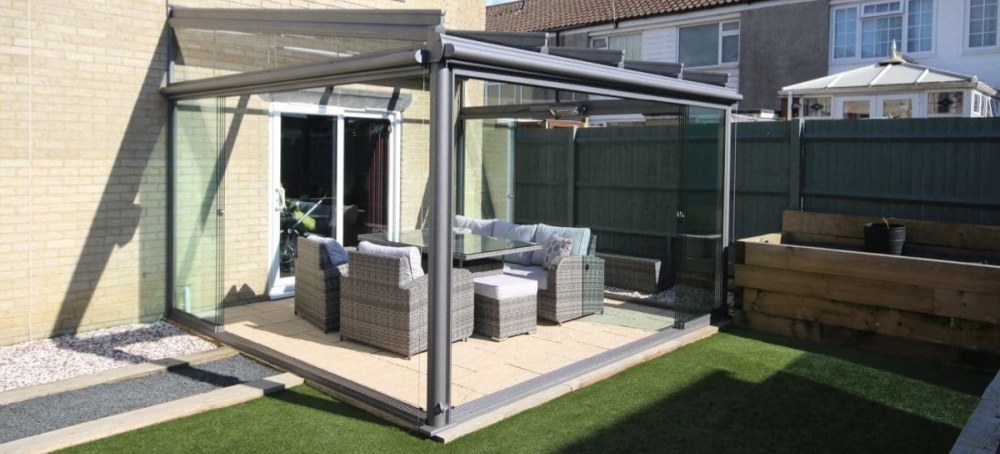
What You Need to Know Before Installing an Aluminum Sunroom
2025-03-05Aluminum sunrooms are a popular addition to many homes due to their strength, aesthetic appeal, and versatility. Before beginning the installation process, it's essential to understand the different factors involved in ensuring a successful project. In this article, we will discuss everything you need to know before installing an aluminum sunroom.
Understanding the Benefits of an Aluminum Sunroom
Durability:
Aluminum frames are one of the primary reasons why sunrooms made from this material are so durable. Aluminum is resistant to rust and corrosion, which makes it perfect for any weather condition, whether it's hot, humid, or rainy. Unlike wood, which may rot over time, or vinyl, which can warp under extreme heat, aluminum will retain its structural integrity for many years.
Aesthetic Appeal:
Aluminum sunrooms offer a sleek, modern look that complements a variety of home styles. The material is available in a wide range of finishes, including matte, polished, and powder-coated options, allowing for greater customization. Whether you're building a traditional or contemporary home, aluminum sunrooms can seamlessly blend into your existing architecture.
Energy Efficiency:
One of the biggest benefits of installing an aluminum sunroom is its energy efficiency. Modern aluminum sunrooms are built with insulated frames and high-quality glass, keeping the room cool in summer and warm in winter. With advanced glazing technology, these sunrooms can reduce your energy bills by minimizing heat loss.
Low Maintenance:
Aluminum requires minimal maintenance compared to other materials like wood, which needs frequent painting and sealing. Aluminum frames only need occasional cleaning with soap and water, and the material won't need to be replaced or repaired as often, making it an ideal choice for homeowners seeking a long-term investment.
Budgeting for an Aluminum Sunroom Installation
Cost Factors:
The cost of an aluminum sunroom can vary depending on several factors, including the size of the room, the design, the type of glass, and the level of customization required. Simple, smaller sunrooms may cost less, while large or multi-story structures with premium finishes and energy-efficient glass can drive the price up. It’s important to get a clear understanding of all these elements before beginning your project.
Materials and Accessories:
Apart from the aluminum framing, you will need to factor in the cost of glass panels, insulation, flooring, electrical wiring, and finishing materials. Energy-efficient glass, especially Low-E glass, can add to the initial cost but will save you money on heating and cooling in the long run.
Labor Costs:
Hiring professionals is typically necessary for the installation of an aluminum sunroom. Labor costs can vary depending on your location, the complexity of the installation, and the contractor’s experience. While some homeowners may opt for DIY installations, it’s often recommended to hire a skilled contractor to ensure that the sunroom is built to code.
Permits and Regulations:
Before you begin, you’ll need to check with local authorities to determine if you need a permit for construction. Permitting fees and requirements can differ by location, and failing to secure the necessary approvals can result in costly fines or delays. Always factor in the time and cost for obtaining permits when budgeting for your project.
Choosing the Right Location for Your Sunroom
Site Selection:
The location of your sunroom plays a crucial role in its functionality. Ideally, you want to build your sunroom in a spot that receives plenty of natural light throughout the day. This maximizes its potential as a bright, inviting space. Additionally, consider the prevailing winds and the direction of the sun to ensure the space remains comfortable year-round.
Proximity to Utilities:
If you plan to use your sunroom as a living area or office, you may need to run electrical wiring or even plumbing for heating or cooling. Carefully consider the proximity to existing utilities and whether the installation of these services will add extra costs to the project.
Landscaping and Views:
An important consideration for your sunroom is how it will integrate with the surrounding landscape. If you have a garden, patio, or backyard, you’ll want the sunroom to offer a beautiful view and provide a smooth transition between the indoors and outdoors. Landscaping features such as trees, shrubs, or fountains can be incorporated into the design for added appeal.
Design Considerations for an Aluminum Sunroom
Size and Shape:
Determining the size of your sunroom depends on the available space and your intended use. If you plan to use the room for dining or entertaining guests, a larger space will be necessary. You should also consider the shape of the sunroom – some popular options include rectangular, square, and custom designs, each offering different levels of flexibility in terms of layout.
Style Options:
Aluminum sunrooms come in various architectural styles. You can choose from traditional lean-to designs, gable styles with a pitched roof, or cathedral ceilings for a more dramatic effect. The style of your sunroom should match the aesthetics of your home and offer maximum natural light.
Glass and Window Options:
The type of glass used in your sunroom is vital for energy efficiency and comfort. Double-glazed, Low-E glass is highly recommended, as it helps with insulation and reduces heat transfer. You can also choose from a variety of window styles, such as casement, sliding, or fixed windows, based on your preferences and the desired ventilation.
Interior Layout:
When designing the interior layout of your sunroom, think about how you’ll use the space. Will it be a cozy reading nook, a home office, or an extended living area for relaxation? Ensuring that the furniture and décor match the room’s purpose will help you get the most out of your sunroom.
Selecting the Right Contractor or DIY
Hiring a Contractor:
Hiring a qualified contractor is the best option for ensuring a smooth and efficient installation process. Look for contractors with experience in building sunrooms, especially those who specialize in aluminum structures. Ensure that they are licensed, insured, and offer warranties on both their work and the materials used.
DIY Installation:
If you’re handy and have experience in construction, you may consider a DIY approach. However, installing an aluminum sunroom is a complex project that requires precision, especially when it comes to framing, glazing, and insulation. Be prepared with the right tools and time, and consider enlisting help from others if needed.
Warranty and Insurance:
Before choosing a contractor, ensure that they provide a warranty for their work. This protects you from potential issues down the road. Additionally, ensure that the materials come with their own warranty for quality assurance. Some contractors may also offer insurance that covers damage during installation.
Obtaining Permits and Dealing with Local Regulations
Local Building Codes:
Building codes vary by location, and it’s essential to be aware of the rules that apply to sunroom construction in your area. These codes will cover things like structural integrity, safety standards, and materials used. Your contractor should be familiar with the local codes and ensure the project complies with all requirements.
Permits and Approval:
In most cases, building a sunroom requires a permit. Depending on the size and scope of the project, you may also need inspections during and after construction. The permit application process can take time, so make sure you plan accordingly and allow for potential delays.
Zoning Restrictions:
Zoning laws can impact the size and placement of your sunroom. For example, some areas have restrictions on how far structures can be from property lines. It’s essential to check with your local zoning office to understand any limitations or requirements before finalizing your sunroom’s design.
The Installation Process
Pre-installation Preparations:
Before installation begins, ensure that the site is cleared of any debris or obstacles. Mark the location of utilities, like electrical lines or water pipes, and make sure the area is level. This helps to streamline the installation process and reduces potential delays.
Step-by-step Installation:
The installation process typically begins with laying the foundation. The aluminum frame is then assembled, and glass panels are installed. Next, insulation is added, and electrical connections are made. Finally, finishing touches like flooring, interior finishes, and any additional features (such as fans or lighting) are completed.
Post-installation Inspection:
Once the sunroom is installed, conduct a thorough inspection to ensure everything is up to standard. Check for proper sealing, window alignment, and structural integrity. Also, confirm that the room is fully functional with any electrical or HVAC systems.
Common Mistakes to Avoid
Choosing the Wrong Size or Style:
One of the most common mistakes is selecting a sunroom size or style that doesn’t complement your home. It’s important to ensure that the sunroom’s design fits within the available space and blends well with your home’s overall aesthetic.
Not Accounting for Utility Needs:
Many people forget to plan for utilities such as electricity, water, or HVAC connections. Make sure that your sunroom’s electrical and plumbing needs are factored into the design and installation plans to avoid costly retrofits later on.
DIY Overreach:
While DIY is appealing to some homeowners, installing an aluminum sunroom requires skill and expertise. Underestimating the complexity of the project can lead to mistakes, delays, and extra expenses. If you’re unsure, it’s best to hire professionals.
Conclusion
Installing an aluminum sunroom is an excellent way to expand your living space and increase the value of your home. By considering factors like cost, design, location, and permits, you can ensure that the project goes smoothly. Whether you choose to DIY or hire a contractor, planning and preparation are key. Remember, your sunroom will be an investment in your home, offering both beauty and functionality for years to come.



